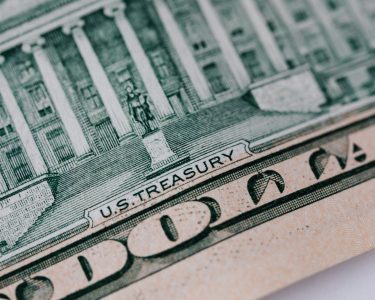Silicon Valley Bank, the leading lender to technology startups and venture capitalists, has long been a symbol of innovation and growth in the tech industry. However, recent reports suggest that the bank’s once-sterling reputation is now under threat amid mounting losses and declining profits. As investors scramble to adjust their portfolios, many are wondering how this could potentially impact interest rates and the broader economy. In this blog post, we’ll explore what led to Silicon Valley Bank’s downfall and what it means for everyone from entrepreneurs to everyday consumers. Join us as we take a closer look at one of the most significant stories in finance today!
What happened to Silicon Valley Bank?
In the late 1990s, Silicon Valley Bank was one of the most successful and well-capitalized banks in the country. But by the early 2000s, it had become embroiled in a series of bad loans and questionable investments that led to its downfall. In 2007, the bank was acquired by Japan’s Sumitomo Mitsui Banking Corporation for $2.7 billion.
The fall of Silicon Valley Bank is a cautionary tale for other banks and financial institutions. It highlights the importance of diversification and risk management, especially in times of economic prosperity.
The bank’s problems began when it started making loans to dot-com startups that were highly leveraged and had little revenue. When the dot-com bubble burst in 2001, many of these companies defaulted on their loans. The bank was also heavily invested in Enron, which filed for bankruptcy in 2002.
These losses forced the bank to raise capital from new investors and slash its dividend payout. In 2007, after years of struggling to turnaround its business, the bank was sold to Sumitomo Mitsui Banking Corporation for $2.7 billion.
How will this impact interest rates?
The Silicon Valley Bank is one of the largest banks in the United States and has been a major player in the tech industry for years. Recently, however, the bank has been struggling. In fact, it recently announced that it would be cutting jobs and closing branches. This news has many people wondering how this will impact interest rates and the broader economy.
There are a few ways that the fall of Silicon Valley Bank could impact interest rates. First, if the bank continues to struggle, it could lead to higher borrowing costs for tech companies. This is because lenders will be less likely to lend money to a struggling bank. As a result, tech companies will have to pay higher interest rates on their loans, which could impact their bottom line.
Second, if Silicon Valley Bank fails, it could trigger a domino effect among other banks. If one large bank fails, it can often lead to others failing as well. This is because investors will become worried about lending money to any bank and will instead choose to invest in safe investments like government bonds. This would lead to higher interest rates across the board, as lenders would charge higher rates to offset the risk of lending money.
Finally, the fall of Silicon Valley Bank could have an impact on consumer confidence. If one of the largest banks in the country fails, it could make consumers hesitant to spend money and put their faith in the banking system. This could lead to a decrease in economic activity and even a recession.
What does this mean for the broader economy?
The fall of Silicon Valley Bank is a big deal. The bank has been a major player in the tech industry for years, and its demise will have ripple effects throughout the sector. Here’s what you need to know about how the fall of Silicon Valley Bank will impact interest rates and the broader economy.
First, let’s take a look at how Silicon Valley Bank got here. The bank was founded in 1983 by a group of entrepreneurs who wanted to provide financing to other startups in the area. And for years, it did just that. But as the tech industry boomed, so did the bank’s lending business.
In recent years, Silicon Valley Bank became one of the biggest lenders to startups in the country. But as we all know, the tech industry can be volatile. And when the inevitable downturn came, Silicon Valley Bank was hit hard.
The bank started losing money in 2018, and it has been unable to stop the bleeding since then. In 2020, it lost $2 billion. This year, it is on track to lose even more money. As a result, the bank has been forced to make some tough decisions.
First, it raised $5 billion from investors in an effort to stay afloat. But that didn’t work. Then, it sold off its loans to other banks at a steep discount. And now, finally, it is shutting down altogether.
So what does this mean for interest rates? Well, when a big bank
How can consumers protect themselves from this fallout?
The fallout from Silicon Valley Bank’s (SVB) collapse is expected to be far-reaching, and consumers will bear the brunt of the impact. Here are some ways consumers can protect themselves:
1. Shop around for the best interest rates on loans and credit cards. With SVB no longer in operation, other banks are likely to increase their rates to fill the void.
2. Keep an eye on your credit score. A drop in your credit score could mean higher interest rates on loans and credit cards.
3. Stay current on your bills. Late payments could result in higher interest rates or late fees.
4. Be prepared for a change in your financial institution’s operations. If your bank or credit card issuer is acquired by another company, you may see changes in terms and conditions, fees, and interest rates.
Conclusion
The fall of Silicon Valley Bank is a cautionary tale for investors, who now have to be more aware of the risks associated with investing in financial institutions. This incident will likely lead to increased scrutiny on banks and other financial organizations, as well as tighter regulations that could ultimately result in higher borrowing costs for businesses and individuals. Ultimately, this event serves as an important reminder that even the most secure investments can become unstable when markets shift rapidly or unforeseen events occur.




